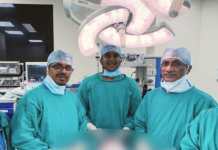Vegetable grafting unit at Hisar university opened
Chandigarh: Haryana Chief Secretary Vivek Joshi on Sunday inaugurated the Vegetable grafting unit at Chaudhary Charan Singh Haryana Agricultural University in Hisar.
Established at a cost of Rs 175 lakh, the unit aims to enhance vegetable crop production and increase farmers’ incomes. Speaking at the inauguration, Joshi emphasized the benefits of the unit, highlighting that it will provide farmers with disease-free and high-quality vegetable seedlings.
Joshi pointed out that the unit’s establishment will not only improve farmers’ earnings but also offer consumers chemical-free vegetables. He noted that excessive use of pesticides and chemicals in vegetable production raises costs and deteriorates quality.
However, grafting technology can address these challenges, resulting in healthier crops and reduced reliance on chemical inputs.
Prof. B.R. Kamboj, Vice-Chancellor of the university, described grafting as a unique horticultural technique that combats nematodes and soil-borne diseases while enhancing plant resistance to various environmental conditions.
This method is applicable to crops such as eggplant, tomato, chili, bell pepper, cucumber, and melons. For instance, grafting tomato onto wild eggplant or bell pepper onto wild chili in polyhouses can effectively prevent nematode-related diseases. Additionally, grafting cucumber onto fig leaf gourd can safeguard plants from extreme cold and abiotic stress.
Prof. Kamboj highlighted that the grafting unit can produce millions of plants simultaneously, benefiting farmers in Haryana and other northern states. The advantages of this technique include increased disease resistance, improved yield, tolerance to extreme temperatures, salinity, and floods, as well as enhanced nutritional quality of the produce.
The unit will also offer training sessions to farmers and unemployed youth, encouraging them to adopt grafting as a viable business opportunity.
Earlier, the university has secured a ‘chemical process patent’ for removing gossypol from cottonseed products. The consumption of oil with high concentration of free gossypol might be responsible for acute clinical signs of gossypol poisoning, which include respiratory distress, impaired body weight, anorexia, and weakness.
–IANS
vg/PGH














